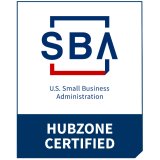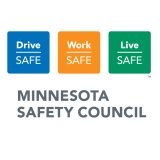How Two-Way Radios Improve Worker Safety
As an employer, the health and safety of your workforce is a priority, especially if your people work in high-risk or demanding operational environments. Hytera two-way radios provide several features designed to improve worker safety.
Workplace injuries are alarmingly common. According to the National Safety Council, in the United States, a worker is injured on the job every seven seconds. This equates to:
- 540 work injuries per hour
- 12,900 work injuries per day
- 90,400 work injuries per week
- 7 million work injuries per year
OSHA reports that on average, more than 100 workers are killed by on the job accidents a week or more than 14 deaths every day.
Many of these injuries and deaths can be prevented by using two-way radios.
Hytera two-way radios also provide several features designed for worker safety. If your employees work alone, in remote areas, or in a potentially dangerous environment, then you need these safety features on your two-way radios.
Emergency Alarms
The emergency button on a radio is usually a raised orange button at the top of the radio so it is easily visible and found by touch. Once the emergency button is pressed, an alarm is sent over the radio system along with the user ID of the sender, and that alarm can be a voice or text message, or a tone alarm.
The emergency alarm can be configured to be sent to the dispatcher, to all other radios, or radios within pre-defined groups, such as administration or security.
The dispatcher receives both a visual and audible alarm, and if the radio is equipped with GPS, the dispatch map automatically zooms in on the location of the radio that sent the alarm. The alarm can be also be sent directly to mobile phones or e-mails.
Radios can also be configured to automatically trigger an alarm when:
- There is no response
- The radio has been inactive for too long
- The radio has been lying flat for too long
- The radio has gone out of a specific boundary
Man Down
The Man Down option will automatically trigger an emergency alarm if a radio is laying down flat or at a certain angle. This may happen if the user has fallen or is unconscious or injured. If the phone stays at the angle too long (both the angle and the time at the angle are pre-programmable parameters) an audio tone warning is issued to the user. If the user does not respond to the tone warning, an emergency alarm will be triggered.
Lone Worker
The Lone Worker feature has a timer in the radio which measures inactivity. When the pre-programmed time period is reached, a warning is issued, and if there is no response from the user, the alarm is triggered. This is designed to function as a check-in system to ensure safety for workers alone in remote areas.
GPS
Radios that feature integrated GPS can send a signal that can help locate the person who has issued the alarm or who is in a man-down situation.Geo Fencing can be used for safety to prevent certain workers from entering areas, for example workers who are not trained or equipped to enter hazardous areas.
Priority Interrupt
Designed to clear a channel in an emergency, Priority Interrupt allows a dispatcher to interrupt existing calls on a channel with important emergency information. The emergency call button can also be programmed for Priority Interrupt to clear the channel and ensure the emergency call gets across.
Remote Monitor
Remote Monitor allows dispatcher to key the PTT button on a user's radio and listen in an emergency. This is useful if someone sends an emergency alarm, but the dispatcher cannot get a reply. Using Remote Monitor, the dispatcher can remotely listen to the radio's microphone and possibly determine details about the situation.
Stun and Revive
It goes without saying that the safety of everyone may be compromised if a radio is lost or stolen. To prevent unauthorized access to secure radio communications or malicious use, Hytera radios can be centrally deactivated (stunned) and reactivated (revived) by dispatch if required.
https://www.hytera.us/resources/how-two-way-radios-improve-worker-safety/ for more information
| Category: | Two-Way Radio |





